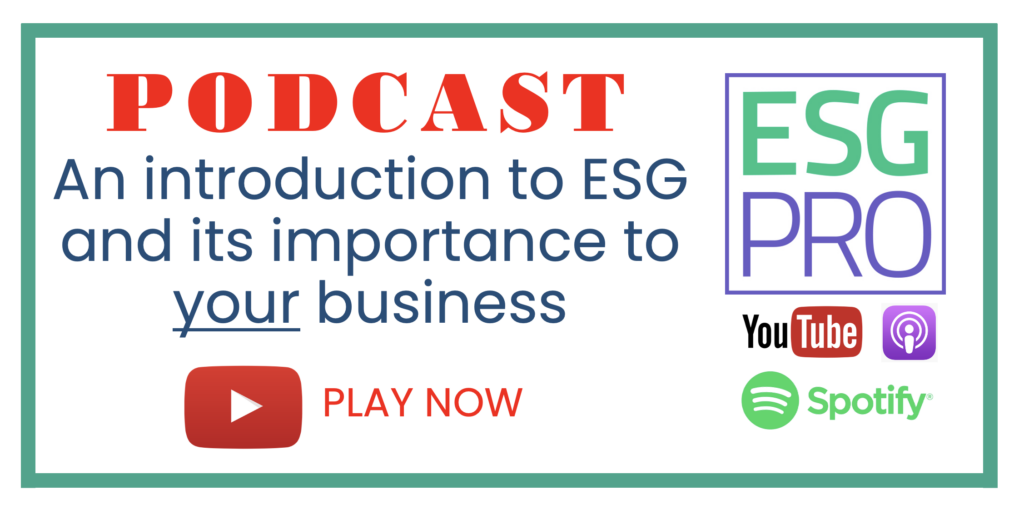Why do Businesses Require a Carbon Reduction Plan (CRP)?
In today’s environmentally conscious era, a Carbon Reduction Plan (CRP) is becoming an essential element of business strategy. This blog explores why businesses, regardless of size or sector, require a CRP, highlighting its importance in the current climate and business landscape.
The escalating concerns over climate change and environmental sustainability have significantly influenced the business world. In response, governments and consumers are increasingly holding companies accountable for their carbon footprints. This shift has made the implementation of a Carbon Reduction Plan (CRP) not just a moral imperative but a strategic necessity for businesses.
What is a Carbon Reduction Plan?
A Carbon Reduction Plan outlines a company’s strategy and specific actions to reduce its greenhouse gas (GHG) emissions. The plan typically includes:
- A baseline assessment of current GHG emissions.
- Specific, measurable targets for reducing emissions.
- Strategies and actions for achieving these targets.
- Timeframes for implementation.
- Mechanisms for monitoring and reporting progress.
Why Do Businesses Need a CRP?
Compliance with Regulations
In the UK, government policies such as PPN06/21 mandate CRPs for companies seeking government contracts. Compliance with such regulations is becoming a prerequisite for doing business, not just in the UK but globally.
Financial Benefits
Implementing a CRP often leads to cost savings. Reductions in energy consumption, waste, and improved operational efficiency directly impact a company’s bottom line.
Risk Management
Climate change introduces multifaceted risks to businesses. Physical risks, such as damage from extreme weather events, can disrupt operations and supply chains. Additionally, transitional risks arise as the economy shifts towards low-carbon models, potentially impacting market positions and regulatory compliance. A well-devised CRP equips businesses to anticipate, understand, and strategically manage these risks. By proactively addressing the potential impacts of climate change and adjusting to evolving economic conditions, a CRP serves as a critical tool in safeguarding business continuity and competitiveness in a changing world.
Enhancing Brand Value and Reputation
With growing public awareness of environmental issues, a robust CRP can enhance a company’s brand and reputation. It demonstrates corporate responsibility and commitment to sustainability, attracting customers and investors.
Competitive Advantage
A CRP can give businesses a competitive edge. It can be a differentiator in markets where consumers and clients favour environmentally responsible companies.
Access to Capital
Investors are increasingly considering environmental criteria in their investment decisions. A CRP can make a business more attractive to investors and facilitate access to green financing options.
How to Develop an Effective CRP
Conducting a Carbon Footprint Assessment
The first step in developing a CRP is to assess the current carbon footprint of the business. This involves measuring the total GHG emissions produced directly (Scope 1 emissions) and indirectly (Scope 2 and 3 emissions) by the business.
Setting Realistic and Achievable Targets
In developing a Carbon Reduction Plan, it’s essential to establish targets that are both ambitious and realistic. These goals should be grounded in the initial carbon footprint assessment, ensuring they are tailored to the specific circumstances and capabilities of the business. Additionally, aligning these targets with broader industry standards and existing regulatory requirements is crucial.
Identifying Reduction Strategies
This involves determining the most effective ways to reduce emissions. Strategies could include energy efficiency improvements, switching to renewable energy sources, reducing waste, and improving supply chain sustainability.
Implementation and Employee Involvement
Successful implementation requires involving employees at all levels. Training and awareness programs can ensure that everyone in the organisation understands the CRP and their role in it.
Monitoring and Reporting
Regular monitoring and reporting of progress are crucial for accountability and for making necessary adjustments to the plan.
Continual Improvement
A CRP is not a one-time effort but requires ongoing commitment and improvement. Regular reviews and updates are necessary to respond to new challenges and opportunities.
Challenges in Implementing a CRP
Financial and Resource Constraints
Small and medium-sized enterprises (SMEs) may face financial and resource constraints in developing and implementing a CRP.
Lack of Expertise
Developing an effective CRP requires specific knowledge and expertise that some businesses may lack.
Technological Challenges
Implementing certain reduction strategies may require access to new technologies, which can be a barrier for some companies.
Further Insights into Carbon Reduction Plans for Businesses
In adding to the core discussion of why businesses require a Carbon Reduction Plan (CRP), it’s important to delve into additional facets that underscore its importance and provide a roadmap for effective implementation.
Aligning with Global Sustainability Goals
CRPs are not just about individual business benefits; they align with broader global sustainability goals. The United Nations Sustainable Development Goals (SDGs), particularly those focusing on climate action and sustainable cities and communities, are echoed in the objectives of a CRP. By implementing these plans, businesses contribute to these global targets, demonstrating their role as responsible global corporate citizens.
Sector-Specific Strategies in CRPs
Different industries emit different levels and types of GHGs and thus require tailored approaches in their CRPs. For example, a manufacturing company might focus on reducing emissions from production processes, while a service-based firm might concentrate on energy efficiency in its offices and reducing business travel. Understanding the specific emission sources and opportunities for reduction in each sector is crucial for an effective CRP.
The Role of Technology and Innovation
Innovative technologies play a vital role in enabling businesses to meet their CRP targets. From renewable energy technologies to advancements in material sciences that allow for more sustainable production processes, investing in innovation is key. Additionally, digital technologies and AI (Artificial Intelligence) can help in monitoring and reducing energy usage and emissions.
Engaging with Stakeholders
A successful CRP requires engagement with a range of stakeholders, including employees, customers, suppliers, investors, and the local community. Communicating the plan, its goals, and its progress creates transparency and builds trust. It can also encourage collective action towards sustainability goals.
Challenges in Supply Chain Management
For many businesses, a significant portion of their carbon footprint lies within their supply chain. Implementing a CRP requires engaging with and possibly restructuring supply chains to ensure suppliers are also committed to reducing their emissions. This can be challenging but is crucial for a comprehensive approach to carbon reduction.
Regulatory Landscape and Future Trends
The regulatory landscape around environmental sustainability is rapidly evolving. Businesses need to stay informed about current and upcoming regulations to ensure their CRPs are compliant. Additionally, understanding future trends in sustainability can help businesses anticipate changes and adapt their CRPs accordingly.
Case Studies and Best Practices
Including case studies of businesses that have successfully implemented CRPs can provide valuable insights and best practices. These examples can serve as inspiration and offer practical ideas that other businesses can adapt and apply.
Embracing Sustainability through Carbon Reduction Plans
The adoption of a CRP signifies more than an alignment with environmental standards; it reflects a profound commitment to the principles of corporate responsibility and ecological stewardship. In an era where the global economy is rapidly pivoting towards sustainable models, businesses that are armed with robust CRPs will not only navigate future challenges with resilience but also capitalise on the myriad opportunities presented by a greener, more conscious market. These forward-thinking entities will not just participate in the green economy; they will shape it, leading the charge in a world that increasingly values sustainability at its core.
Thus, the integration of a Carbon Reduction Plan is not just a strategic choice for businesses today; it is a foundational pillar for those aspiring to thrive and lead in a future that champions sustainable growth and responsible business practices.
At ESG PRO, we specialise in assisting both SMEs and larger corporations to develop affordable and effective CRPs and achieve their wider sustainability goals. Understanding the unique challenges and resources of businesses of all sizes, we offer tailored solutions that blend practicality with ambition. Our approach involves cost-effective strategies and innovative solutions that align with your company’s specific needs, ensuring that sustainability becomes an integral, yet financially manageable part of your business model.
Next Steps
Don’t miss this opportunity to transform your strategy with our expert guidance. Click on ‘Book a Meeting‘ to schedule a personalised session with our dedicated team. Let’s collaborate to make a sustainable impact! Also, remember to connect with us on LinkedIn for the latest insights and updates in the realm of ESG. Your journey towards sustainable excellence is just a click away.
#ESGPRO #SustainabilityPodcast #GHGEmissions #ESGConsulting #EnvironmentalStrategy #CarbonFootprintManagement #SustainableBusiness #ClimateAction #CorporateResponsibility #GreenhouseGasProtocol #ESGUK #EURegulations #GlobalSustainability #EnergyEfficiency #NetZeroTargets #SustainableInvesting #EnvironmentalConsultancy #BusinessLeadership #SustainabilityGoals #CorporateSustainability #ESGExpertise #CarbonReductionPlan #SustainabilityStrategies #GreenBusinessInitiatives #ClimateActionForBusiness #CRPImplementation #SECR #PPN0621 #TCFD #CSRD #CarbonFootprintReduction



